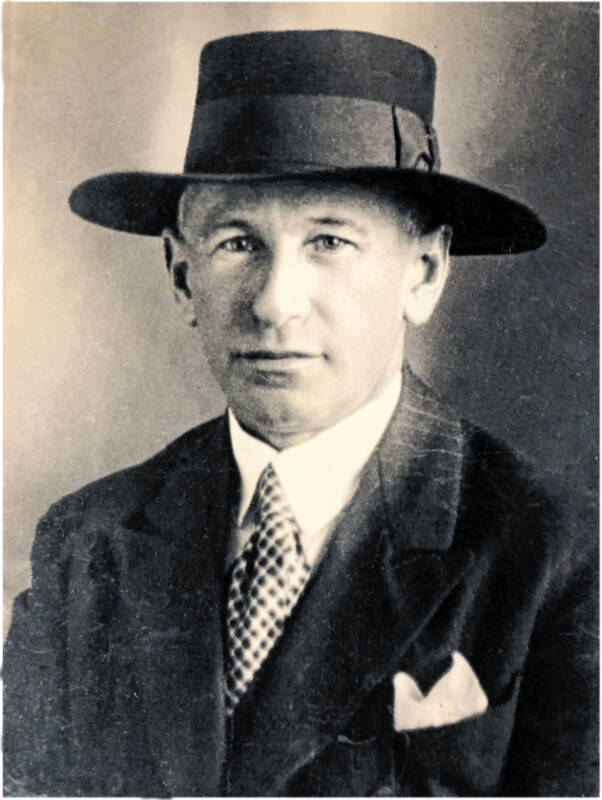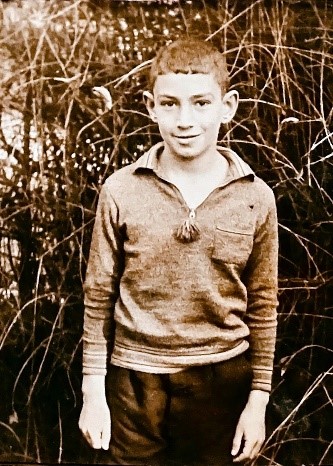Otto Bamberger
Author: Manfred Brösamle-Lambrecht


Otto Bamberger (born May 4, 1885 in Mitwitz) managed the company D. Bamberger together with his father Philipp (1862-1919) and his uncle Fritz (1864-1942). He was a successful entrepreneur, important patron and art collector - and a decidedly unconventional contemporary.
He drove his tailor to despair when he demanded a suit jacket without lapels – in Otto’s opinion no one needed them anyway. As the managing director of a company with over 300 employees, he was a member of the SPD, a party that at that time still advocated the socialization of companies.
Family

He met his wife Henriette (Jetta) by placing a marriage advertisement in a national newspaper - in 1913 a decidedly unusual way of initiating a marriage, which threw his family for a loop.
The couple had two children: Ruth (1914-1983) and Klaus (1920-2008), who later changed his first name to Claude in the United States. In his publication "History of a Family" ... he tells of a free, carefree childhood in Lichtenfels.
Both children received an excellent school education in select institutions.
Photo: Otto with daughter Ruth at the “frog fountain” in the garden of the “Sonnenhaus”
Successful entrepreneur
Otto Bamberger, the eldest of Philipp Bamberger's four sons, was prepared for his role as a business manager from the very beginning. His father sent him to various partner companies abroad for an apprenticeship, and in Lichtenfels Otto learned the trade of a merchant. As early as 1925, he joined the management. Since the demand for traditional palm leaf articles declined noticeably after World War I, he opened up a new business field for the company with wooden toys. He steered the company through the world economic crisis unscathed.
Collector and patron

Otto Bamberger was an important patron and collector of art. His collection of works from the sphere of German Expressionism included numerous works by Barlach, Beckmann, Chagall, Kirchner, Kubin and many other well-known artists. Large parts of the collection were confiscated and looted by the Nazis in 1938. A small number of the artworks could be saved in 1945, when a cousin of Klaus as US occupation officer secured the remains still stored in the Lichtenfels town hall.
Otto is considered the most important patron of the Weimar and Dessau Bauhaus. In 1924 he had his villa "Sonnenhaus" in Kronacher Straße in Lichtenfels, built in 1914, completely furnished and designed by the Bauhaus interior designer Erich Dieckmann.
Photo: The "Sonnenhaus" in Lichtenfels, Kronacher Str. 21
It is the only known house whose entire interior was designed and manufactured by the Bauhaus
Death after Nazi "protective custody" 1933
As a Jew, wealthy entrepreneur and Social Democrat, Otto Bamberger was a welcome target for the henchmen of the new rulers. On a business trip to Frankfurt, he was imprisoned and mistreated by the SA for a week. Only the energetic intervention of his wife and a police lieutenant who had remained decent was able to free Otto Bamberger from a detention from which he was never to recover. Inwardly broken, he sought relief from severe depression by taking a cure in Baden-Baden, where he died of a heart attack in 1933.
Son Klaus Philipp (Claude P.) Bamberger
Son Klaus, who later became "Claude P." in the USA, reports in his memoirs of an untroubled, free and wild childhood in Lichtenfels. From 1930, his parents sent him to the reform-pedagogical boarding school "Schule am Meer" on the island of Juist. After his father's death and in the face of massive pressure from the new rulers on the politically and pedagogically disagreeable school, he transferred to the conservative elite boarding school „Voralpine Knaben-Institut Dr. Schmidt“ in St. Gallen, Switzerland, and later to the École supérieure de commerce in Neuchâtel.
In 1938, at the age of 17, he emigrated to the United States and found initial lodging with his uncle Gus Bamberger in Cleveland, Ohio. Initially, Claude worked as a newspaper delivery boy, messenger boy and in other jobs, while furthering his education in evening classes.
Employment with his uncle Anton Bamberger in New York brought him into the business of plastics production and processing. In 1953, after the death of his uncle, Claude P. Bamberger founded his first own company. Among other things, his companies were among the world’s leading exporters of plastics to Asia.
In later years of his life, he published several works on his family history and visited Lichtenfels several times. Coming to terms with the Nazi crimes against his family was an important concern for him.
 © Familie Bamberger
© Familie BambergerPhoto: Klaus Philipp Bamberger 1931 School by the sea (Juist)
 © Familie Bamberger
© Familie Bamberger